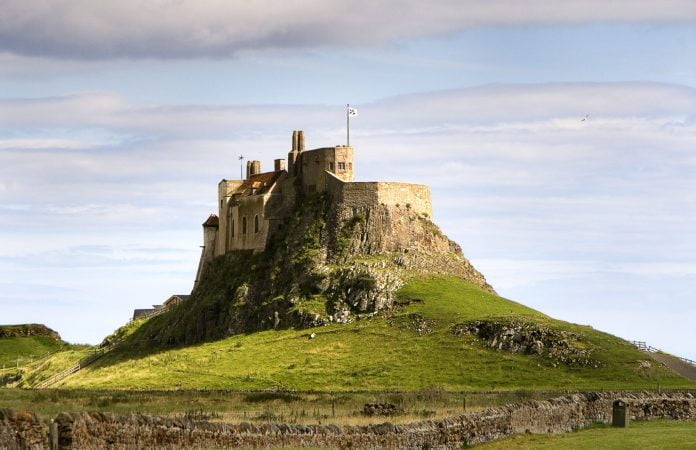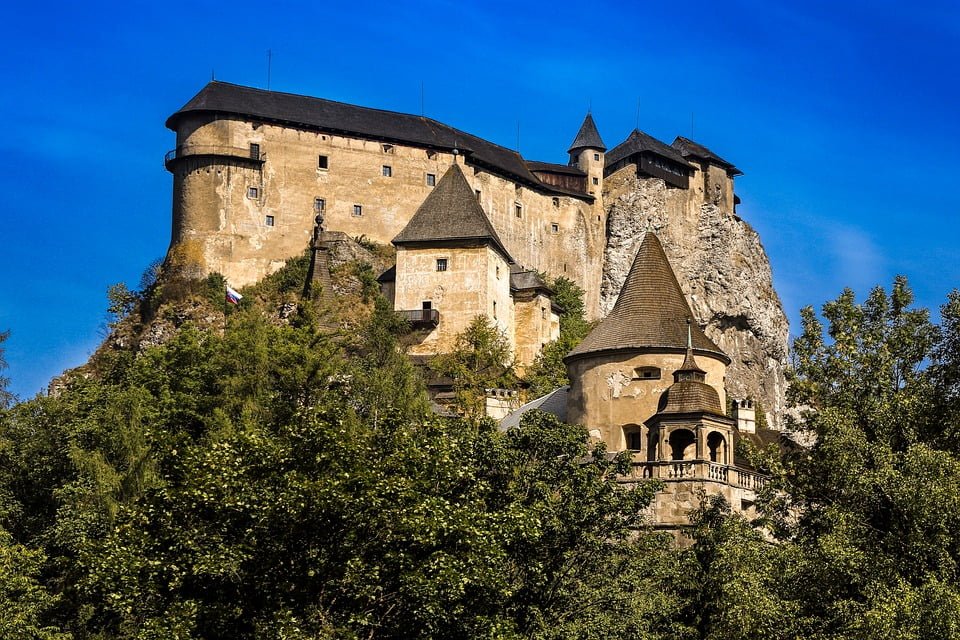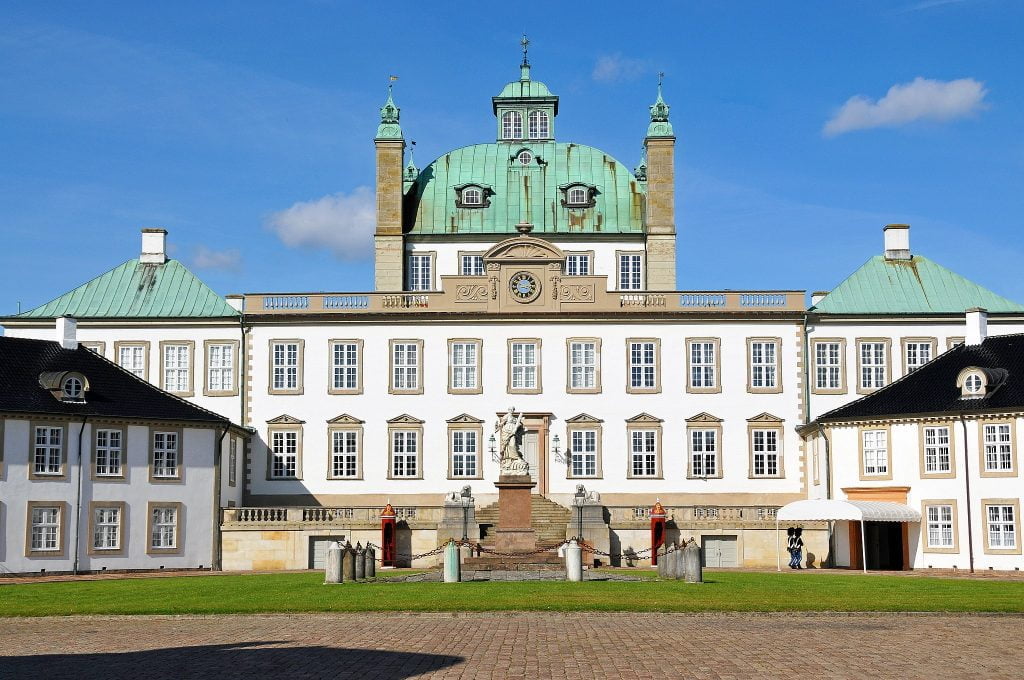Located on Holy Island, Lindisfarne Castle is symbolic of the Christian British Empire of the Sixteenth century. From serving as a defensive barrier against Scottish attacks to being converted into a current residency for a wealthy Edwardian bachelor, Lindisfarne Castle has undergone multiple renovations to suit the needs of its residents.
Today, the castle attracts hundreds of tourists worldwide, given its idyllic location and historical significance. To dive deeper into the geographical positioning of the castle and what makes it stand out in history, let’s look at a detailed analysis of Lindisfarne Castle in the following sections.
Table of Contents
Lindisfarne Castle has frequently appeared in movies and television shows, including Roman Polanski’s Cul-de-Sac, aired in 1966, to the finale of the 1993 television movie titled The Scarlet Pimpernel.
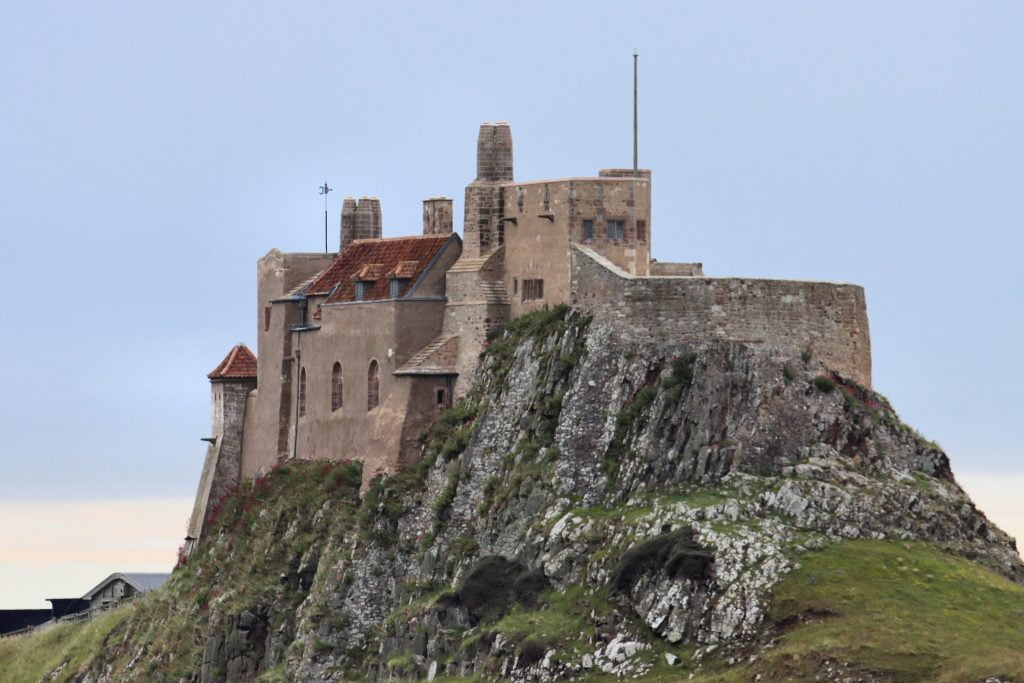
Frequently Asked Questions
Where is Lindisfarne Castle Located?
Lindisfarne Castle is in the northeast coastal region of Northumberland, England. The Holy Island of Lindisfarne is accessible via a causeway covered by the tide twice a day. The Island is roughly 2 square miles or 5 square kilometers in size.
When was Lindisfarne Castle Built? Who Build It?
Lindisfarne Castle was built by Henry VIII around the mid-1500s to replace the Lindisfarne priory. The stones used for the construction of the Castle were also borrowed from this abandoned Priory.
When is The Best Time to Visit the Castle?
You can visit Lindisfarne anytime around the year, however since Lindisfarne Castle is built on a tidal island with its causeway covered by tides twice a day, it is best to check the tidal charts for the day to select a suitable time to reach the island.
What Other Monuments are Located Nearby?
Holy Island, where Lindisfarne Castle is located, is also home to numerous historical monuments. You can also visit the Parish Church of Saint Mary the Virgin, Lindisfarne Priory, St Aidan’s RC Church, and the Fort of the Heugh.
FOR HISTORY | BEAUTIFUL IMAGES | INTERESTING FACTS | TRAVEL TIPS
Early History
From Lindisfarne Priory to Lindisfarne Castle (6th Century-16th Century)
The holy land of Lindisfarne is a natural harbor located just off the coast of Northumberland. Around 643 AD, Oswald, the king of Northumbria granted the island to Christian monasteries. Followed by the Viking raids, the Lindisfarne monastery was abandoned in the Eighth Century. The Norman invasions paved the way for the Lindisfarne Priory to be re-founded. The monastery was fortified to prevent any later attacks.
Skipping ahead a few centuries, the Lindisfarne monastery was suppressed by Henry VIII. As the King of England, Henry VIII declared himself the supreme head of the Protestant Church of England. His actions against the Catholic monasteries and churches outraged many when he started to strip the churches and monasteries of their riches.
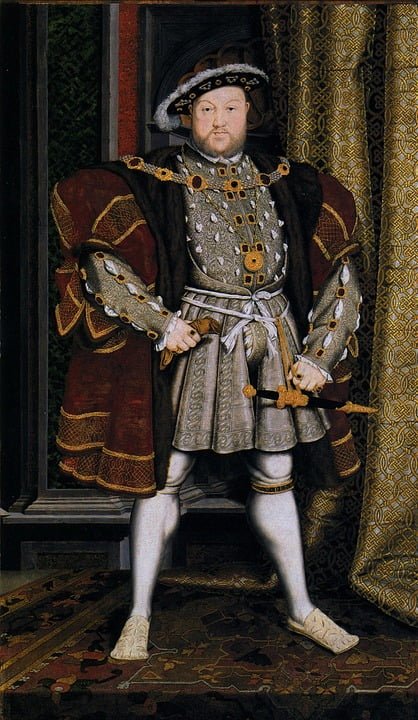
Given the strategic position of Lindisfarne, the monastery was taken under the ownership of the Crown and was turned into a base for the Tudor navy. Realizing the vulnerable position of Lindisfarne Island to Scottish attacks, Henry VIII ordered the fortification of the island. As a result, the Beblowe Craig was decided as a spot to build a castle. The construction for Lindisfarne Castle presumably started around 1549. The stones used for the fortification were taken from the Lindisfarne Priory.
The decline of Lindisfarne’s Geographical Position (17th Century- 19th Century)
With the Union of the Crowns in 1603, Lindisfarne Castle lost its relevance. Nonetheless, the castle was held by the Royalist forces at the start of the English Civil War, until it was later seized by the parliamentarians. Until 1819, the Castle was used as a coastguard station under the British Crown.

Modernization of Lindisfarne Castle in the 20th Century
The (by this time) ruinous Castle of Lindisfarne was purchased by Edward Hudson, owner of Country Life Magazine. He commissioned Sir Edwin Lutyens to remodel the castle into a fashionable residence. Hudson later sold the castle to a stockbroker in 1921, who later sold it to a merchant banker from where it ended up under the ownership of the National Trust in 1944.
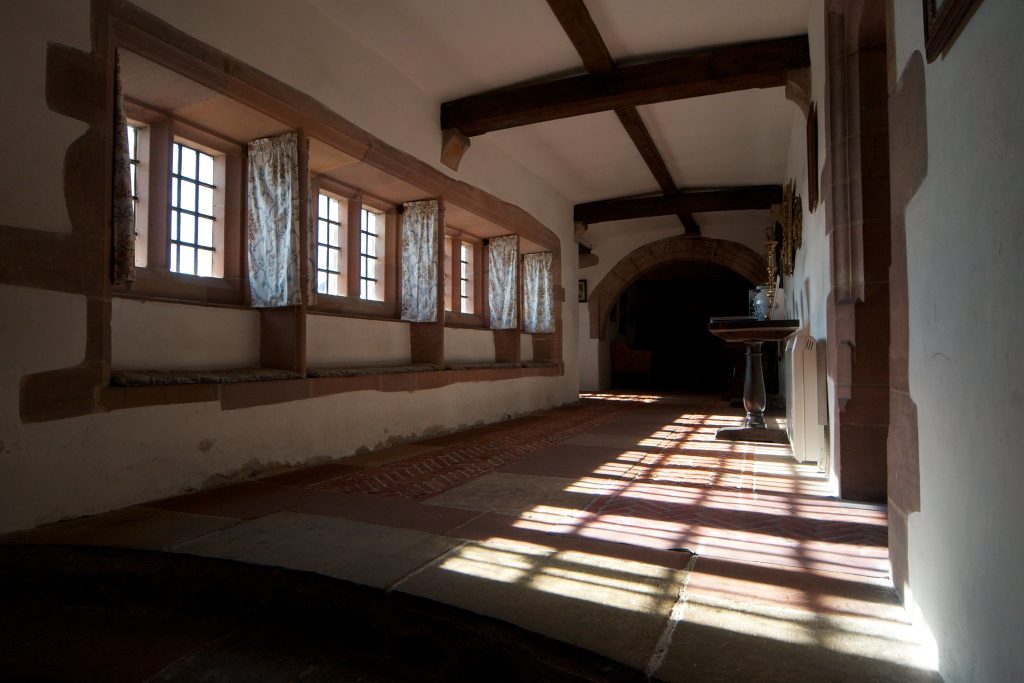
Revisit More Historic Places Below or Read Further
Current Times
The Lindisfarne Castle that we see today is the 20th-century modernization overseen by Edwin Lutyens. The entrance to the castle is dramatic, with a steep climb around a rocky base. The inside of the castle is mostly bare with no significant artifacts or tapestries on display.
However, the natural view of the place makes up for the missing artifacts inside the castle. For this very reason, the castle remains a tourist hotspot.
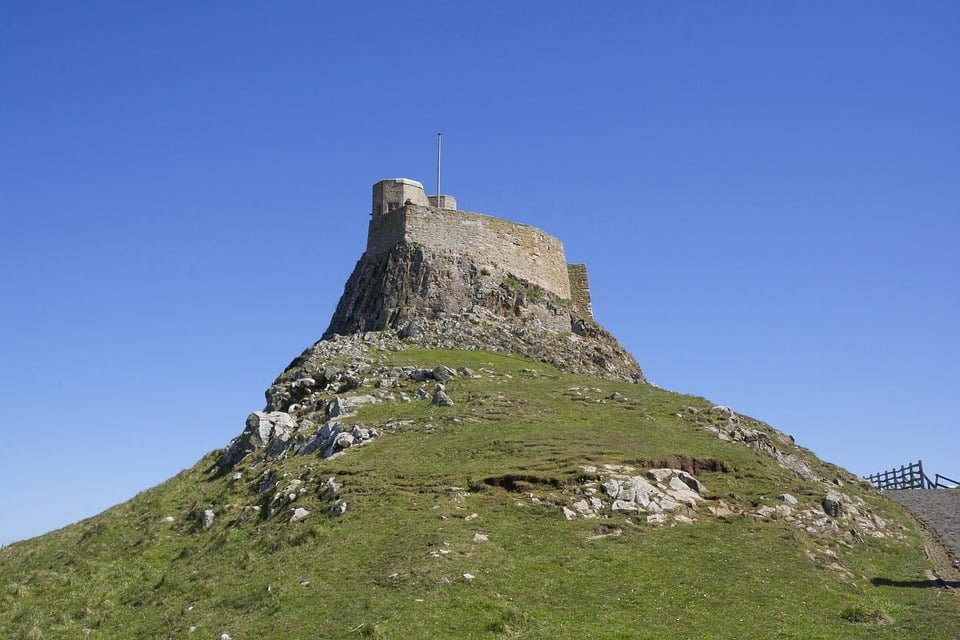
Interesting Lindisfarne Castle Facts
- The castle was originally a small fort to replace the Lindisfarne monastery. The “fort” was later expanded by Elizabeth 1 and was turned into a vast castle over two decades.
- Lindisfarne Castle was referred to as “the fort” for the first three centuries of its construction. The sole purpose of the castle was to serve as a garrison for the Crown’s soldiers.
- Lindisfarne Castle has frequently appeared in movies and television shows, including Roman Polanski’s Cul-de-Sac, aired in 1966, to the finale of the 1993 television movie titled The Scarlet Pimpernel.
Visiting Lindisfarne Castle – Tips and Tricks
The castle, with its historical wonders and magnificent landscapes, is worth a visit. If you are planning your trip to visit Lindisfarne Castle, the following information will help you book your reservations and arrange the proper finances for the journey.
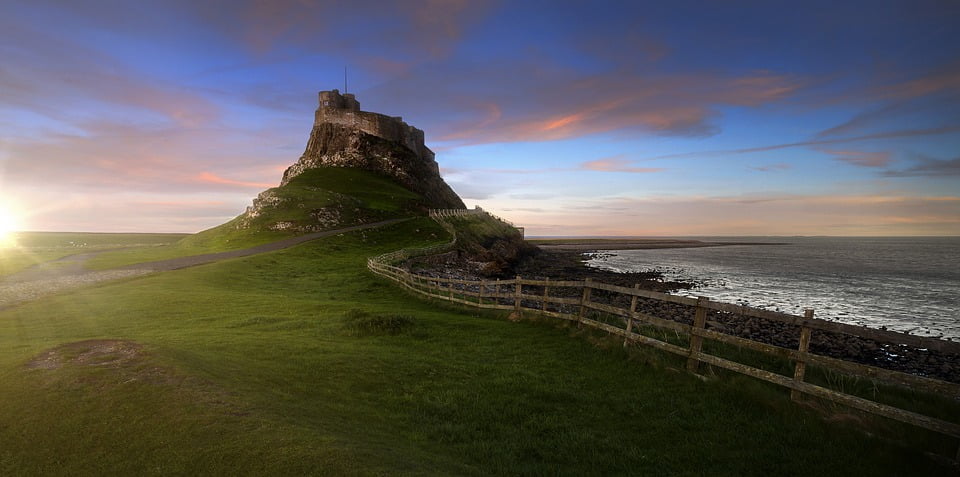
How to get to Lindisfarne Castle?
The only way to access the castle is via the causeway between Lindisfarne Island and the mainland. You can either drive to the castle or take a bus. Perryman’s Buses run the 477 services to Holy Island, which you can use to get to Lindisfarne Island.
Ticket Prices, Visiting Hours & Travel Tips
Information was checked & updated on October 24, 2023.
The visit to the castle is free for members of the National Trust Fund. However, a small ticketing fee must be paid per individual to visit the castle for the general public. For an adult, the ticket price costs £9.40 ($12 USD). Children’s tickets are £4.70 ($6 USD) whereas the cost is £23.40 ($29 USD) for a family ticket. Under the age of 5, children enter for free.
The entry to the Gertrude Jekyll Garden is free, whether you visit the castle or not. You can get an outside view of the castle from the Gertrude Jekyll Garden without paying for it.
Since Lindisfarne Castle is located on a tidal island, the visiting hours can vary depending upon the tides. The Castle usually opens from 10 am to 5 pm.
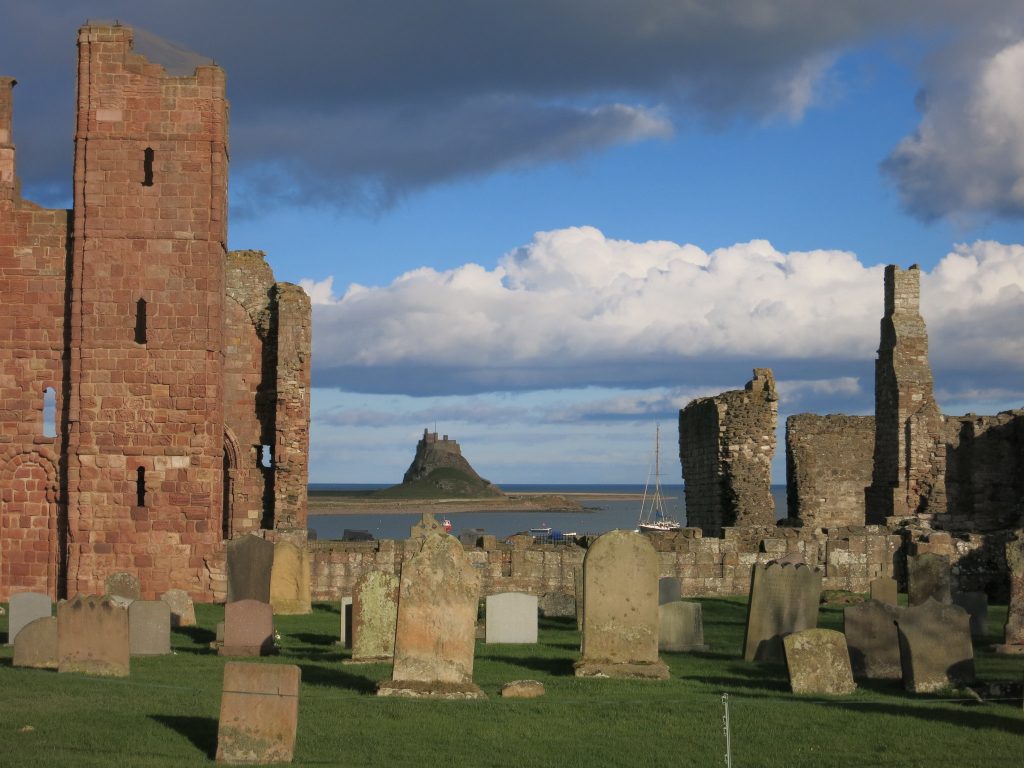
How Long Will It Take to Tour Around?
Since the castle is mainly empty with nothing much to see inside, you can finish the whole tour in under 30 minutes.
Up to Date Information
For up to date ticket prices and visiting hours visit the official website: https://www.nationaltrust.org.uk/lindisfarne-castle
Some words of advice and tips:
- Since the castle is located on a tidal island, ensure that you check the tidal hours so that your planned visit is not interrupted.
- Make sure to arrive on time or no later than within 10 minutes of your booked slot; otherwise, it is up to the discretion of the National Trust to cancel or prioritize your booking over other tourists.
- Be mindful that there are no public washrooms available around Lindisfarne Castle.
Discover more amazing castles in England, we’ve compiled a list for you!

